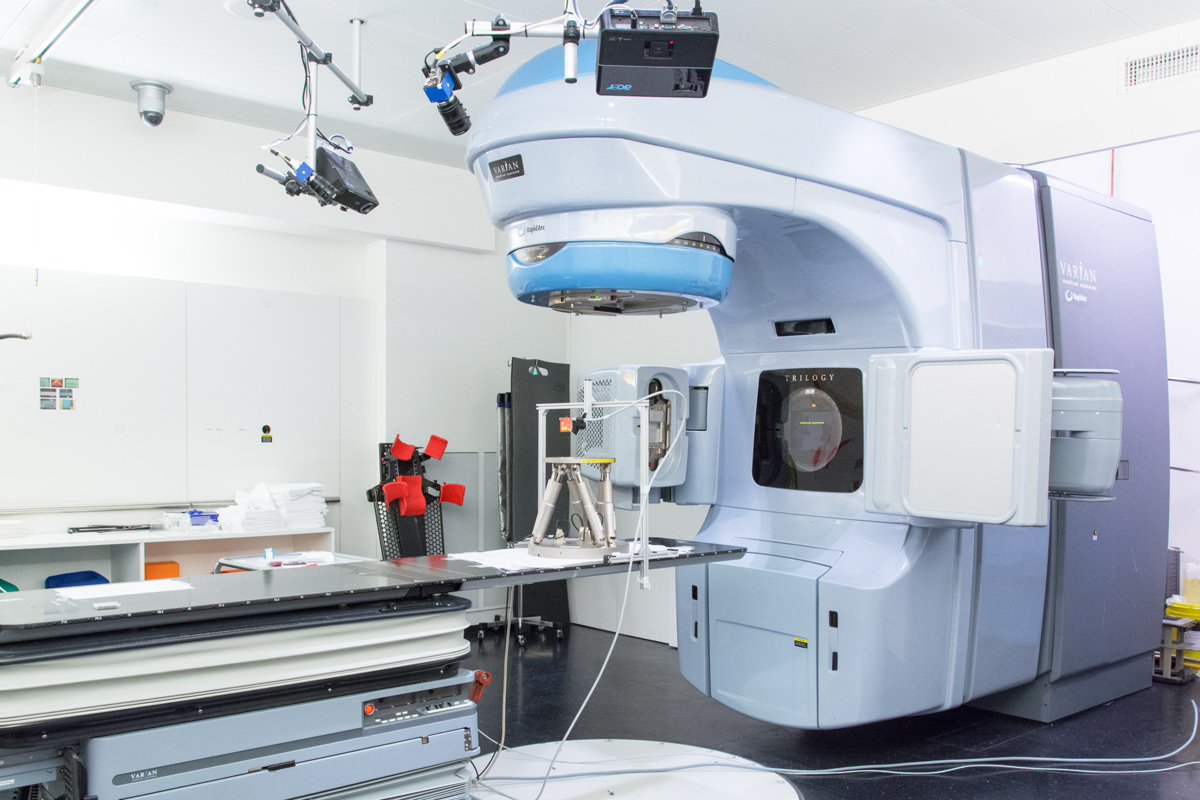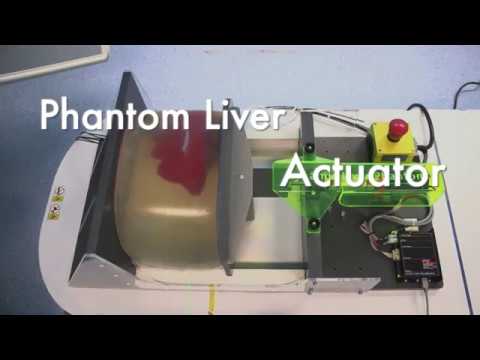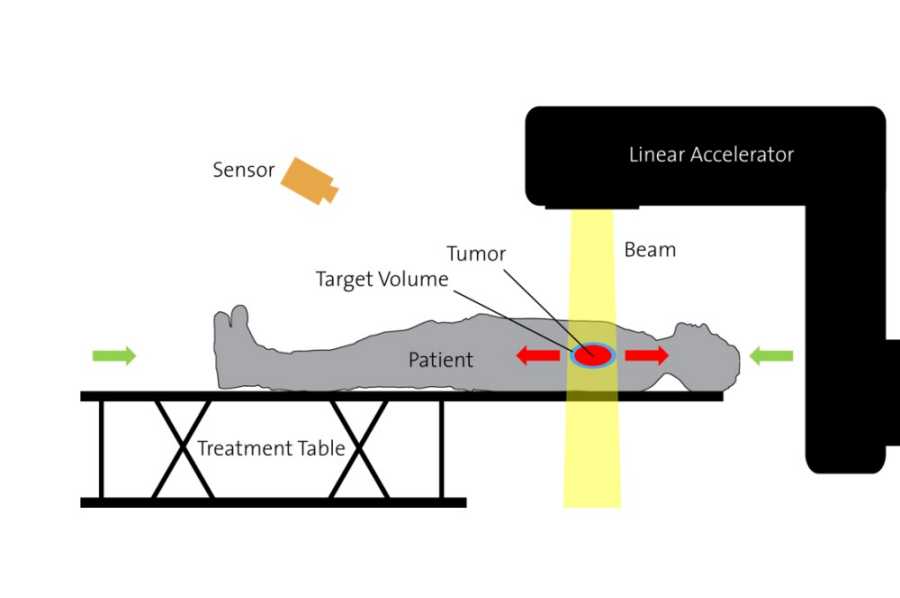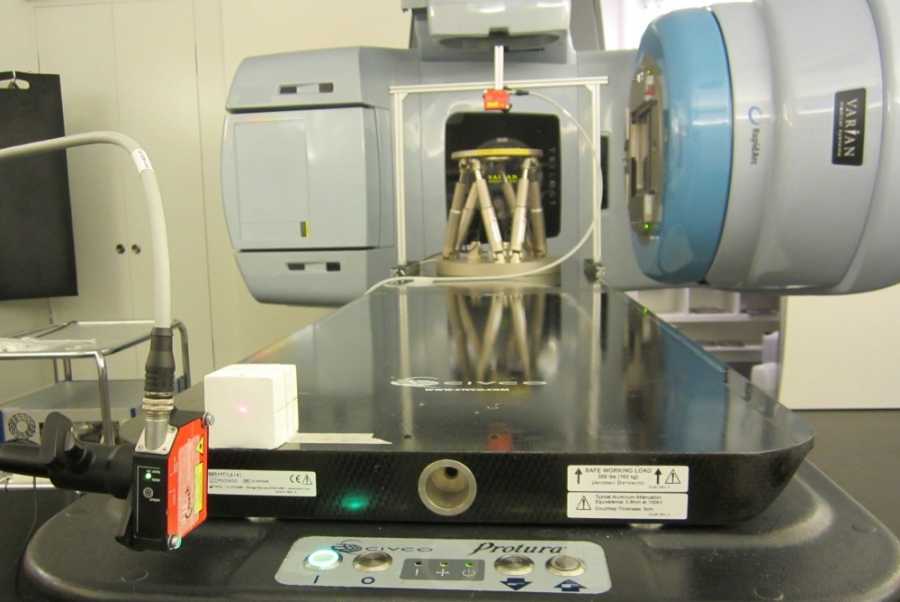Real Time Tumor Tracking during Radiotherapy Using the Treatment Table
This research project is about increasing the survival prospects for cancer patients with tumors in their torsos. These tumors may move, which require the increased irradiation of healthy tissue to ensure that the tumor is treated.

Radiotherapy uses ionizing radiation to treat tumor patients. The ionization destroys the cells’ DNA and should therefore only be applied to tumor tissue. A robotic treatment table is normally used for exact static positioning of the patient. While this works well with static tumors, some tumors move, such as lung tumors due to respiration. In these cases, the target volume to be irradiated is enlarged so that the tumor is always inside this volume, which results in the increased irradiation of the healthy tissue. This research project (in collaboration with USZ) is investigating an alternative method known as real-time tumor tracking. This method reduces the enlargement of the target volume necessary whilst compensating for the tumor’s movement. This is performed using the treatment table, which moves the patient in the opposite direction to the tumor. As a result, the tumor does not move relative to the beam.
A part of this project is testing the approaches in real-time tumor tracking. A phantom was developed that features realistic liver motion, a time-resolved dosimetry system, and can be imaged using computed tomography or ultrasound. The phantom consists of a casted soft silicon mixture containing an artificial liver with vascular structure. The soft silicon mixture allows the compression of the phantom in longitudinal direction to mimic arbitrary respiratory motion.



